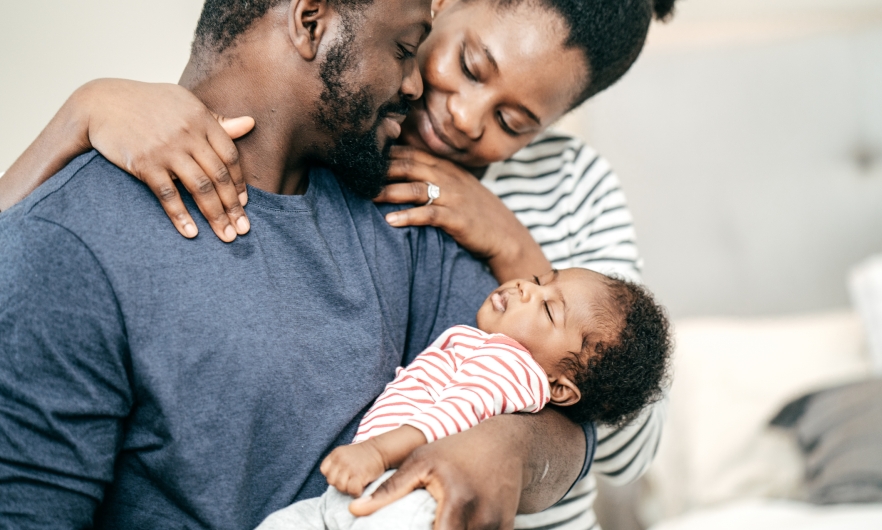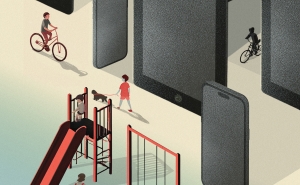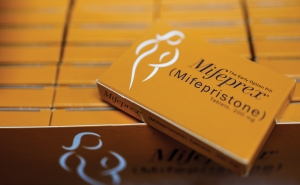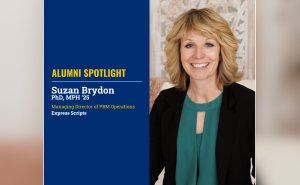The Public Health Strategy Behind Baltimore’s Record-Low Infant Mortality Rate
CCP looks to replicate the success of B'more for Healthy Babies in more communities.

In 2009, Baltimore’s infant mortality rate, 13.5 deaths per 1,000 live births, was among the worst in the U.S. By 2021, the rate had dropped to 7.5 deaths per 1,000 live births—the city’s lowest figure on record.
What accounts for the dramatic decrease? At the top of the list is B’more for Healthy Babies (BHB), an initiative spearheaded by the Baltimore City Health Department with the Family League of Baltimore and HealthCare Access Maryland. Launched in 2009, BHB is a comprehensive public health strategy aimed at reducing the infant mortality rate and enhancing maternal and child health in Baltimore.
Over the past 15 years, the Johns Hopkins Center for Communication Programs has been BHB’s lead communication partner, developing strategies, campaigns, and community engagement efforts to support the initiative. There have been campaigns on safe sleep practices for infants, breastfeeding, smoking cessation, and nutrition, among others.
“We want the work to be sustained, because we really do believe that the collective effort across Baltimore is necessary to maintain the city’s low infant mortality rate,” says August Summers, PhD ’13, MHS ’05, who leads CCP’s U.S.-based initiatives.
Here, Summers discusses BHB’s impactful campaigns, community-informed messaging, and expanding CCP’s domestic programs.
BHB has seen significant improvements in Baltimore’s infant mortality rate, including a record low in sleep-related deaths—a top contributor to infant mortality. What’s next?
We’re celebrating BHB’s successes and longevity. But after sleep-related deaths hit an all-time low (7 in 2016), we have seen that number creep back up, especially during the pandemic and afterward. There's still work to be done to make sure we continue communicating and educating to drive the infant mortality rate down further. And even though the disparity between Black and white infant deaths in Baltimore has decreased by 49% since 2009, the goal is to eliminate the disparity.
What’s been encouraging is that Upton/Druid Heights and Patterson Park North/East eliminated the Black-white racial disparity in infant mortality rates by 2019, a trend that has persisted through the latest data available in 2021. We want to replicate the success in Baltimore communities across the city.
Right now we’re in the process of developing safe sleep materials to support the incredible efforts of several organizations and individuals involved in keeping babies safe and healthy. For example, a cornerstone of the campaigns are videos that feature Baltimore residents, which were developed following CCP’s systematic approach. One of the videos features Baltimore mothers whose babies died during their sleep, which makes an emotional appeal that is fundamental to changing behavior. And we’re updating the safe sleep video to make it fresher and to really connect again with the community. The content will be driven by evidence and insights from the community, similar to our approach in developing the initial video.
A key goal is to increase self-efficacy, all through an equity lens. Because it's not always easy—babies don't always like to sleep on their back. And sometimes, there are different challenges related to social determinants of health: Someone might not have a crib or might have inadequate housing. Over time, BHB has increasingly emphasized the importance of anti-racism, addressing social determinants of health, and confronting implicit and explicit biases as significant factors in efforts to reduce infant mortality and close the gap in racial disparities.
What is CCP’s process in developing communications for BHB?
We begin with getting insights from our main audience—people who are pregnant or recently had a baby—really hearing and understanding their stories. Part of the process is being empathetic, understanding what people believe, and what their concerns are. The next step is thinking about how to take all the pieces and turn them into messages and materials that will get people's attention, and that they can understand and relate to. Then we test the messages and materials with our audience to see if it works well and finalize it based on that feedback. Even after communication materials are shared throughout the city, we continue to monitor, get feedback, and update as needed.
Take the safe sleep campaign, an important piece of BHB communications. How do you get the message to the target audiences?
BHB is a collective effort of many groups at many levels. What works best is when a consistent message of ABCD (“alone, on the back, in the crib, don’t smoke”) is coming from multiple places. We’ve had several rounds of city-wide campaigns to promote safe sleep and smoke-free homes, so you might see a billboard or social media post with a very simple message and an image of a baby on his back in a crib. We also provide pediatricians or safe sleep ambassadors, or whoever is providing education, with counseling tools and talking points to share the information with new parents. We support faith-based outreach and work with BHB communities Upton/Druid Heights and Patterson Park North/East neighborhoods in disseminating this safe sleep message and other health topics. For health providers, we send out newsletters, safe sleep counseling tools, and direct providers to resources about crib assistance programs and care coordination services for their patients.
There are multiple messaging points—having providers talk to them (new parents) at the hospital, then the family leaves the hospital and they're seeing the message on social media, then they go to an appointment at a health clinic or at social services and there's a video in the waiting room with the same message. It’s inclusive and people see themselves in it.
What have you come to understand about pregnant people and people with young children over the course of the long partnership with BHB?
The social and physical environment is a very important part of lived experience and how the challenges that people face impact health outcomes. More and more, we’re having important conversations with a range of stakeholders about making sure there's not a 100% responsibility placed on the parent to do everything right, but to understand that there is a larger context at play.
If you take something like smoking, sometimes parents talk about smoking to cope with stress. How do we help relieve stress so that the coping mechanisms can shift a bit so that there's less smoke in the environment of infants and people who are pregnant, which really puts them at risk. For example, infants exposed to smoke are at higher risk of dying from sudden infant death syndrome, or SIDS. In thinking about our audiences, like providers, we stress empathizing with and acknowledging this new parent of a 6-month-old and connecting them to a smoking cessation or support resource. In the case of a relative or family friend, we might suggest they ask how they can support, so that the parents can take time for healthy self-care to help alleviate stress and exhaustion.
CCP has branched out from BHB with social and behavior change campaigns in Baltimore on sexual and reproductive health for young people, opioid harm reduction, and COVID-19 vaccines. Can you talk about CCP’s goal to expand beyond Baltimore?
People are most familiar with CCP’s work globally. We’ve applied everything we do globally to our efforts in Baltimore over the last 10 years. In addition to social and behavior change, we’ve also done capacity strengthening, knowledge management, human-centered design, research and evaluation, and more. We’ve demonstrated that CCP’s approach works in the U.S. especially as part of partnerships with local organizations and other JHU centers.
We’re seeking opportunities to scale up our existing work and apply the same types of frameworks and approaches that we use in Baltimore in different places, while aligning with our values of using strength-based approaches, centering joy and connection, and a commitment to anti-racism. The issues that we're helping to address here exist in many places, and we would craft messages and approaches that resonate and are specific to that community. We want to build relationships as we’ve done here in Baltimore with BHB and other initiatives, and welcome funding opportunities from both the private and public sector. We have a great team of people who lead with empathy and who respect community members as the experts, owning solutions to address the community’s health priorities. We’re looking forward to continuing that same model within Baltimore and beyond.
Jackie Powder is the associate editor of Hopkins Bloomberg Public Health magazine.





